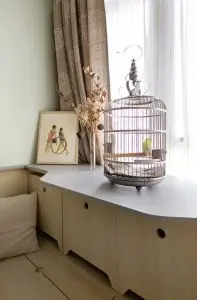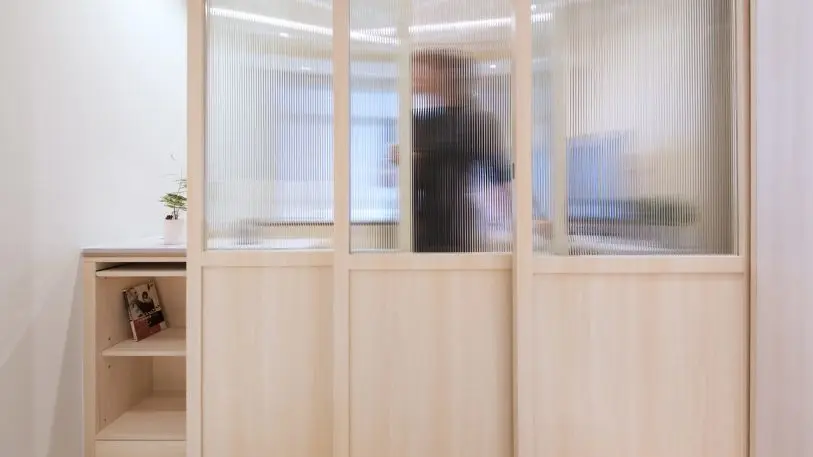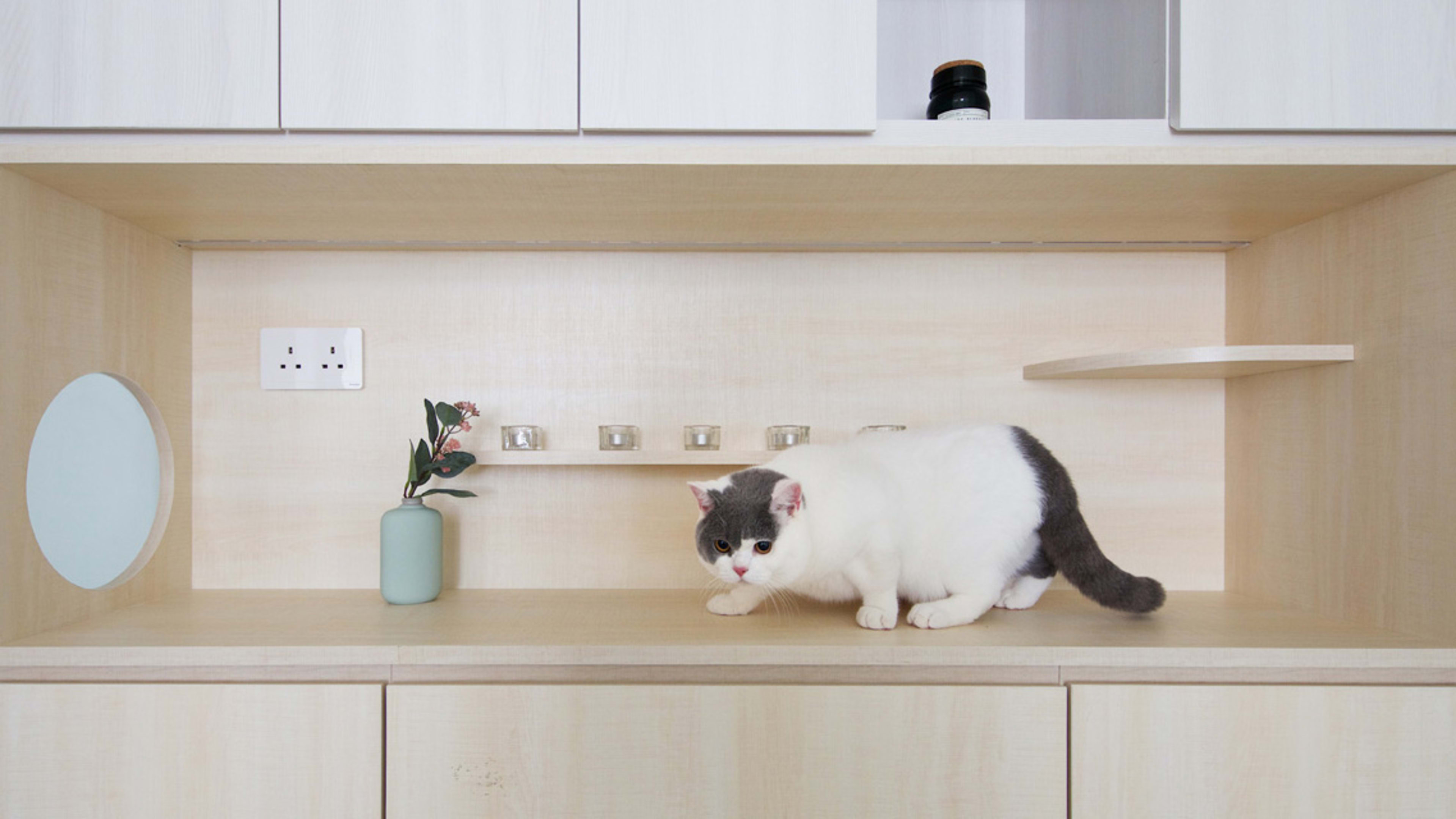The Hong Kong-based architecture studio Sim-Plex specializes in creating smart interiors that make use of every available cubic inch of available space. But even its architects were surprised when they got a request from a couple, Ken and Teri, who commissioned the studio to turn their tiny 453-square-foot apartment into a home not just for themselves–but also a mother-in-law, one cat, and a parrot. And they needed plenty of storage space, too.

However, this project presented obvious additional challenges for the designers. The pet factor was the biggest, according to Sim-Plex. Patrick Lam, founder and creative director of the firm, told me via email that the biggest problem was how to integrate a habitat for a parrot and cat into the design. In fact, that challenge is what gave the project its name, “Pets Playground.”
The young couple and the mother treat their pets like family members, Lam says. The architects wanted them to have their own spaces–which made figuring out the circulation of a parrot, cat, and three people in a tiny space especially challenging. In the apartment, the master bedroom is connected to the living room, which is connected to the dining room, which is connected to the mother’s bedroom.
Lam explains that the parrot needs a large cage with plenty of sunshine, so they decided to put the parrot on a low cabinet in front of the large living room window. Because the parrot sometimes gets out of its cage, the house itself couldn’t have any large, elevated surfaces for the bird to poop on, so they made the upper part of the cabinets very narrow.

Then, remember, there’s a cat. Cats love birds. Eating them, I mean. The feline and aviary members of the household had to remain separated, even in such a tiny home. “The three fritted glass sliding doors could also be closed when the parrot is out to prevent direct contact between the parrot and the cat,” Lam explains, “[and the] the wood platform of the living room also helps reduce the chance of the cat from walking toward the parrot’s area.”
Lam adds that the mother–who owns the cat–wanted it to have space to move around. Sim-Plex solved this by integrating the dining table into the dining room cabinets and turning those features into cat play spaces, with holes and integrated tubes inside. Even the mother’s bedroom wardrobe is part of the cat’s domain, which is connected to another cabinet that connects to the dining room cat playground. The cat’s litter box is next to the apartment’s entrance and the top doubles as a stool for people to sit as they put their shoes on.
Each of these areas are made visually distinct by the architects’ choice of materials: light maple wood and gray colors for the couple’s side and, in the mother’s area and dining room, white oak, which helps brighten things up since these rooms are further away from the apartment window. You have to give it to Sim-Plex and Lam: They did a phenomenal job into turning potentially hellish living situation into a light-filled living space for animals and people alike.
Recognize your brand’s excellence by applying to this year’s Brands That Matter Awards before the early-rate deadline, May 3.












